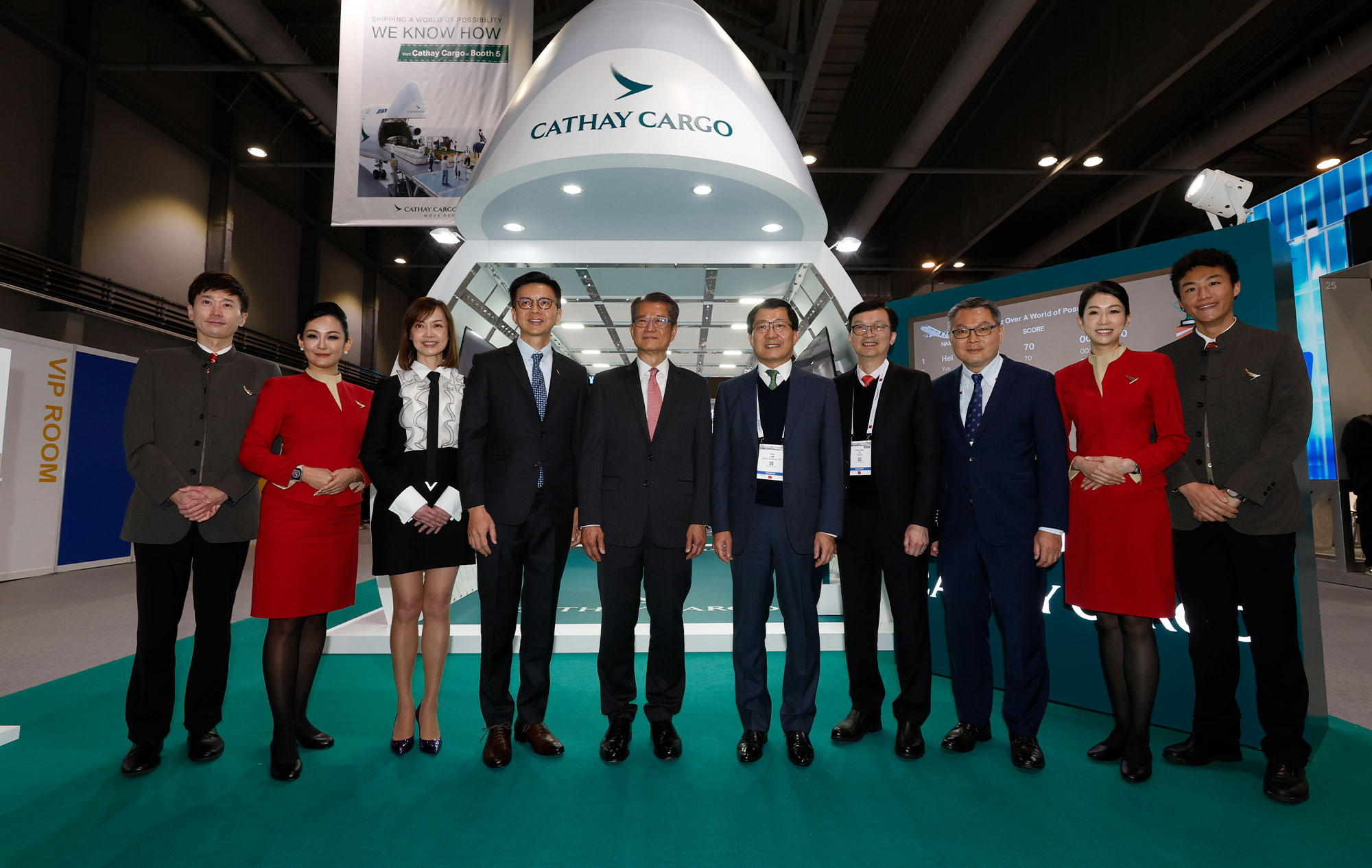Every road has a beginning and an end; even the maritime one at the heart of Xi Jinping’s ‘One Belt One Road’ strategy. The Pearl River Delta (PRD), which marks the beginning of the great sea passage envisaged by China’s president, is in the middle of its own journey.
Guangdong needs to ‘replace the bird but keep the cage’, according to Wang Yang, the province’s former party secretary, in reference to its need to switch from low-end manufacturing to higher added value products and services.
Hong Kong, meanwhile, has its own identity issues. The global financial crisis, the economic slowdown in China and the shift in emphasis among the world’s biggest investment banks have led to a degree of soul searching.
‘This is probably the worst time in 20 years for Hong Kong. I’ve been saying that for some time,’ John Tsang, the city’s financial secretary, told the South China Morning Post recently. So what is the prognosis?

The Pearl River Delta
Long established as the factory floor of China and the world, the PRD continues to be buffeted by rising local wages, increasing land costs, competition from lower-wage Southeast Asian neighbours and China’s economic slowdown.
Meanwhile, the country’s move from an economy based on low-end products reliant on cheap labour to higher value products and services has been a mixed blessing. The PRD’s traditional exports – electrical appliances such as TV sets and refrigerators, and other consumer products such as clothing, toys, shoes and electronics – are under pressure. It saw a 0.6 per cent rise in exports in 2015 – above the national average but still modest by global standards.
China’s slowdown and persistent economic reform is dampening demand and hitting exports and imports but there has also been industrial transformation, financial services innovation and rapid improvements in logistics.
As a result, the PRD has developed a more diversified industry base and increased the sophistication of its manufacturing output. It has offset rising wages and workers’ migratory shifts in part by introducing automation at its factories.
The PRD’s major cities are booming. Between 2011 and 2014 Shenzhen’s economy grew 12 per cent, Guangzhou’s 10 per cent and Huizhou’s 13 per cent, according to figures from HSBC. The PRD overall saw growth of 10 per cent.
But there is some way to go. High-tech manufacturing accounts for only 11.2 per cent of its total industry mix, while traditional industries still represent nearly 40 per cent.
Hong Kong
Hong Kong, meanwhile, is keeping its head above water, although investment banks in the city have been recalibrating their operations after China’s recent economic slowdown, which has caused some uncertainty.
Meanwhile, China’s economic malaise and stricter disclosure rules have led to reductions in the volume of IPOs (initial public offerings). The gradual opening up of Chinese mainland stock markets, meanwhile, could be a double-edged sword.
Mark Austen, chief executive of the Asia Securities Industry & Financial Markets Association in Hong Kong, told Bloomberg News: ‘The question people in Hong Kong should be asking themselves is how do we become the Chicago to Shanghai’s New York?’
The city’s economic growth is forecast to be just one to two per cent this year, a decrease from its five per cent average between 2011 and 2014.
Adding insult to injury, the city’s credit outlook was recently downgraded by Moody’s and Standard & Poor’s due primarily to its proximity to an uncertain China. This prompted Mr Tsang, Hong Kong’s financial secretary, to defend the city’s links with the Chinese mainland, citing opportunities rather than problems.
Hamstrung by a lack of space and saturation in some industries, Hong Kong’s five per cent average GDP growth between 2011 and 2014 was dwarfed by many of the cities in the PRD.
Meanwhile, according to Hong Kong government data, the city’s merchandise exports dropped 4.5 per cent year-on-year in January-May 2016, after falling by 1.8 per cent in 2015. Domestic exports dropped 16.6 per cent and imports fell 6.6 per cent. For 2016 as a whole, exports are projected to drop by four per cent.
This can partly be attributed to changing winds in China. Austerity, both imposed and self-imposed, has had a detrimental effect on exports – for example, with gold, which is Hong Kong’s biggest export to the Chinese mainland.
Despite the uncertain times for both Hong Kong and the PRD, the smart money is on the region continuing to adapt and flourish. The innovation and diversification marking the current chapter in China’s economy is creating a variety of new-economy national champions – many of which are based in the PRD.
Shenzhen, known as China’s Silicon Valley, is home to local technology juggernauts such as Tencent, Huawei and ZTE, which compete in the global marketplace. Meanwhile, the region has been making strides in petrochemicals through companies such as CNOOC.
Between 2011 and 2014, the fastest growing sectors in Guangdong province were finance, healthcare, scientific research and services, and wholesale and retail trade.
Made in China
Chinese government support in the form of Beijing’s ‘Made in China 2025’ push, which aims to promote IT, robotics, electric vehicles and other advanced industries, will no doubt take this further. There are also pledges to deepen the synergies and accord between Hong Kong, Macau and the Chinese mainland in the latest five-year plan (2016-2020).
‘The free-trade zones in the region will implement innovative policies to boost trade and financial sector development and deepen co-operation with Hong Kong and Macau,’ the plan states.
The ambition of the region to stay ahead of China’s economic ambitions, global trade and emerging trends is evident at the grassroots level.
Spending on R&D is higher in Guangdong than any other province in the country, at US$12.5bn in 2014 compared to US$2bn in Beijing and US$4.5bn in Shanghai, according to HSBC. That said, innovation will only get the region so far.
It is clear that the PRD and Hong Kong, traditional competitors for trade volume, increasingly need each other despite, or because of, the Chinese mainland’s economic shift.
For example, Hong Kong’s role as the main entry point from the West into China and as the dominant offshore renminbi hub preserves its gravitas among global asset managers and investment banks.
Hong Kong remains Guangdong’s top trade partner and source of foreign direct investment, contributing 22 per cent of the province’s total trade. Meanwhile, the Chinese mainland (Guangdong in particular) is an important customer for Hong Kong.
‘Hong Kong, one of the key players in the pan-Pearl River Delta region, can benefit from synergy within the region, as cities across the border are expected to complement each other’s advantages in a tie-up to seek opportunities along the route,’ Huang He, a professor of international studies at Fudan University, told the South China Morning Post recently.
The Closer Economic Partnership Agreement between Hong Kong and the Chinese mainland will no doubt improve this further but it is their unprecedented logistics and infrastructure push that should make the biggest difference.
Bringing products to the global market and keeping the region relevant is vital and this could be the most important reason why the outlook is so positive.
Hong Kong and the PRD’s status as two of the world’s largest and most important trade and manufacturing hubs has made them huge markets globally for sea and air cargo services. Guangzhou, Shenzhen and Hong Kong are all in the top 10 as global container ports in terms of volume, and their proximity to the factory floor is vital to that. Their size, volume and capacity mean the world’s biggest ships can load up with goods destined for the global market, all of which were produced a short road trip away.
According to a 2015 Moody’s report, Guangzhou and Shenzhen ports will benefit from connections with land and river transport as well as proximity to the foreign-trade oriented and high-value-added regional economy. This despite ‘strong competition from Hong Kong for high-end and international transshipment cargoes’.
That three of the world’s largest ports sit just a few miles from each other is a logistical boon to the economies of the PRD and Hong Kong. Hong Kong’s airport, meanwhile, is set to get a third runway, while Shenzhen is about to add three entirely new airports of its own (for commercial airliners, seaplanes and helicopters), adding capacity to air freight capability.
Land transport links are also in the process of being significantly upgraded. The road bridge and tunnel that will link Zhuhai to Macau and Hong Kong, and the impending high-speed rail line between Hong Kong and Guangzhou will cut travel times considerably for people and road shipments.
It is clear that joining the dots won’t be easy considering the moving parts and local government politics. But the developments are ambitious, timely and extremely positive – which is good for the cage, as well as the birds.








